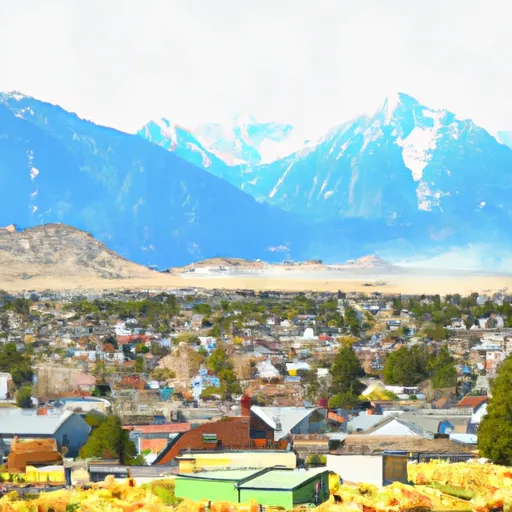-
 Snoflo Premium
Snoflo Premium
Get unlimited access to all our content
With no Ad interruptions! - Start Your Free Trial Login with existing account
Lonepine
Eden Index
Climate
7.6
•
Recreation
•
Community
•
Safeguard
3.1/10

Lonepine, Montana is a small rural community located in the western part of the state. The town experiences a continental climate, characterized by cold winters and warm summers. Average temperatures range from around 20°F (-6°C) in the winter to about 80°F (27°C) in the summer. Precipitation is relatively evenly distributed throughout the year, with an annual average of around 20 inches. Snowfall is common in the winter months.
Lonepine is surrounded by a diverse hydrology network, featuring numerous rivers, streams, and lakes. The nearby Kootenai River is a popular spot for fishing and boating, offering opportunities to catch various species such as trout and salmon. Additionally, the area is home to several smaller lakes and reservoirs, perfect for kayaking, canoeing, and swimming during the summer months.
Outdoor enthusiasts will find plenty of activities to enjoy in Lonepine. The surrounding mountains provide excellent opportunities for hiking and camping, with trails offering breathtaking views and a chance to observe local wildlife. Hunters can explore the nearby forests for deer, elk, and other game animals. Furthermore, Lonepine's proximity to national forests and wilderness areas allows for additional recreational activities, including horseback riding, mountain biking, and cross-country skiing in the winter.
In conclusion, Lonepine, Montana offers a picturesque setting with a continental climate, diverse hydrology constituents, and a wide range of outdoor recreation opportunities for nature lovers and adventurers alike.
What is the Eden Index?
The Snoflo Eden Index serves as a comprehensive rating system for regions, evaluating their desirability through a holistic assessment of climate health, outdoor recreation opportunities, and natural disaster risk, acknowledging the profound impact of these factors on livability and well-being.
Climate Health Indicator (CHI): 7.6
Lonepine receives approximately
396mm of rain per year,
with humidity levels near 68%
and air temperatures averaging around
8°C.
Lonepine has a plant hardyness factor of
5, meaning
plants and agriculture in this region thrive during a short period during spring and early summer. Most
plants will die off during the colder winter months.
By considering the ideal temperature range, reliable water supplies, clean air, and stable seasonal rain or snowpacks, the Climate Health Indicator (CHI) underscores the significance of a healthy climate as the foundation for quality living.
A healthy climate is paramount for ensuring a high quality of life and livability in a region, fostering both physical well-being and environmental harmony. This can be characterized by ideal temperatures, reliable access to water supplies, clean air, and consistent seasonal rain or snowpacks.
Weather Forecast
Streamflow Conditions
Pend Oreille
Area Rivers
Pend Oreille
Snowpack Depths
Pend Oreille
Reservoir Storage Capacity
Pend Oreille
Groundwater Levels
Recreational Opportunity Index (ROI):
The Recreational Opportunity Index (ROI) recognizes the value of outdoor recreational options, such as parks, hiking trails, camping sites, and fishing spots, while acknowledging that climate plays a pivotal role in ensuring the comfort and consistency of these experiences.
Access to outdoor recreational opportunities, encompassing activities such as parks, hiking, camping, and fishing, is crucial for overall well-being, and the climate plays a pivotal role in enabling and enhancing these experiences, ensuring that individuals can engage in nature-based activities comfortably and consistently.
Camping Areas
| Campground | Campsites | Reservations | Toilets | Showers | Elevation |
|---|---|---|---|---|---|
| Cascade Trailhead | 15 | 2,689 ft |
Nearby Fishing
Nearby Ski Areas
Catastrophe Safeguard Index (CSI):
The Catastrophe Safeguard Index (CSI) recognizes that natural disaster risk, encompassing floods, fires, hurricanes, and tornadoes, can drastically affect safety and the overall appeal of an area.
The level of natural disaster risk in a region significantly affects safety and the overall livability, with climate change amplifying these risks by potentially increasing the frequency and intensity of events like floods, fires, hurricanes, and tornadoes, thereby posing substantial challenges to community resilience and well-being.
Community Resilience Indicator (CRI):
The Community Resilience Indicator (CRI) recognizes that education, healthcare, and socioeconomics are crucial to the well-being of a region. The CRI acknowledges the profound impact of these elements on residents' overall quality of life. By evaluating educational resources, healthcare accessibility, and economic inclusivity, the index captures the essential aspects that contribute to a thriving community, fostering resident satisfaction, equity, and social cohesion.

